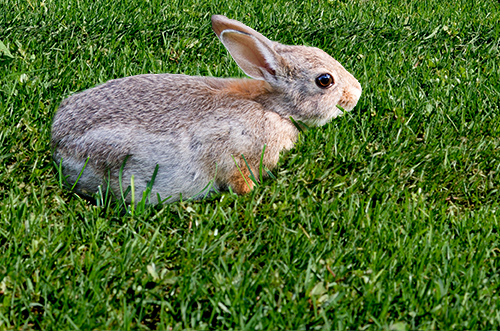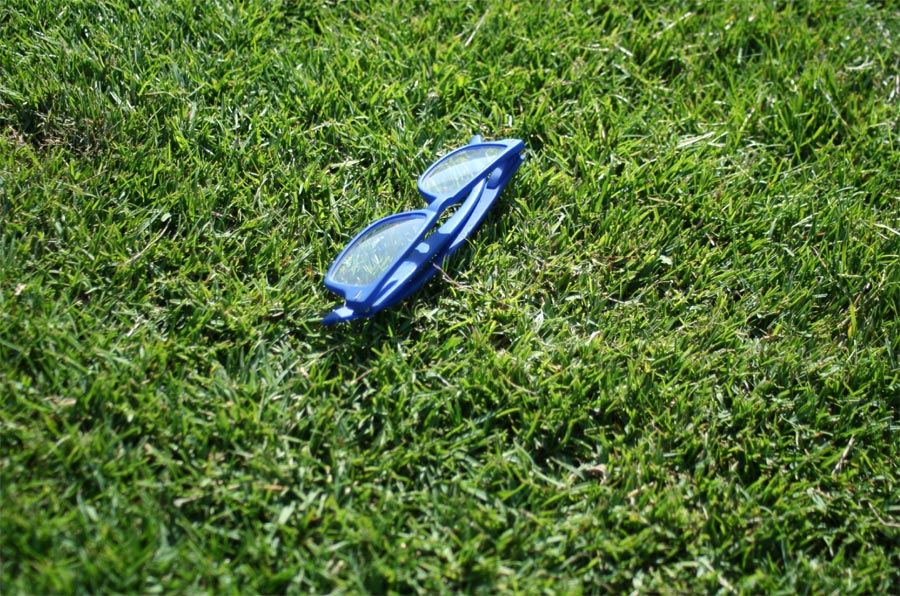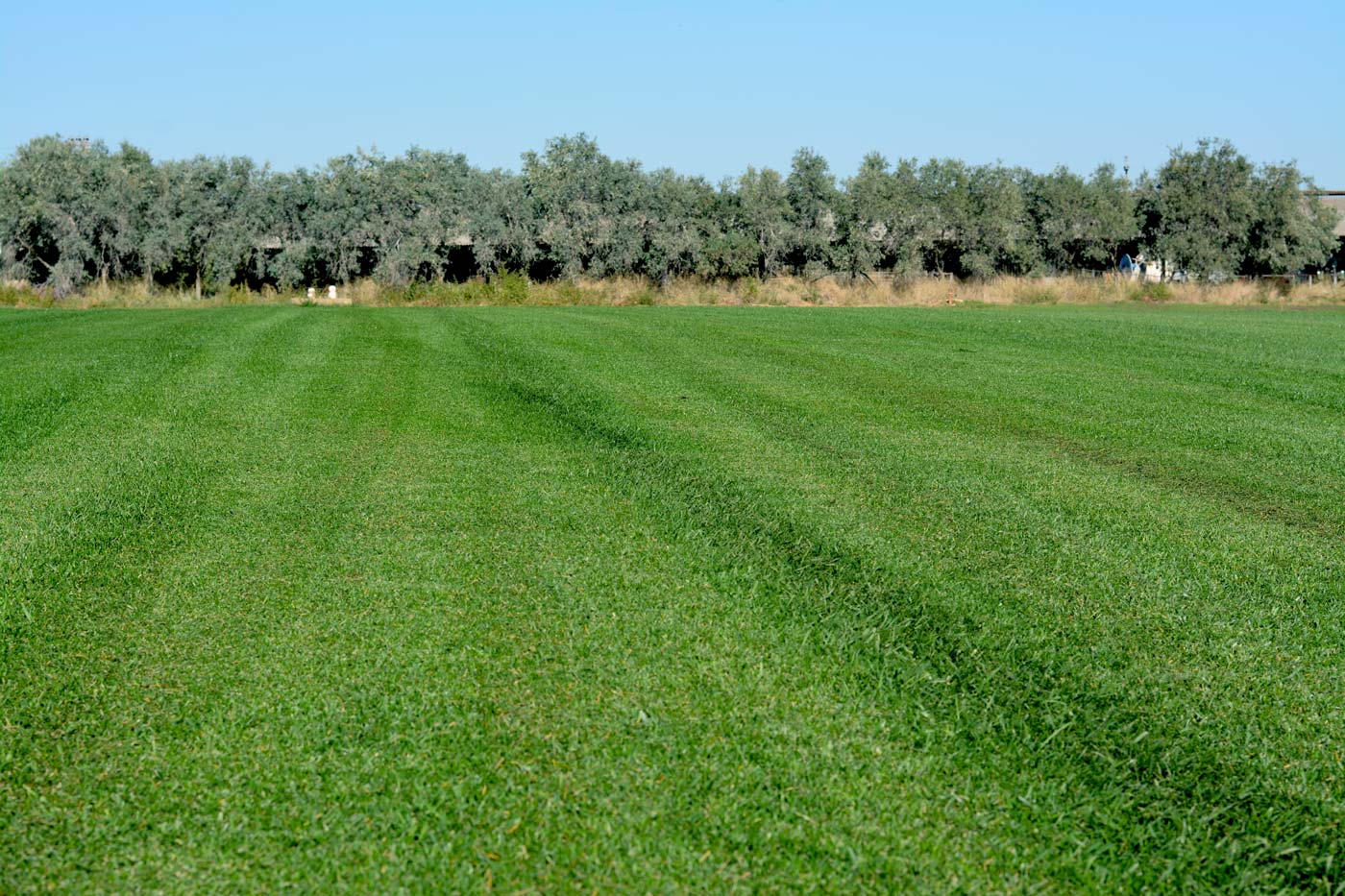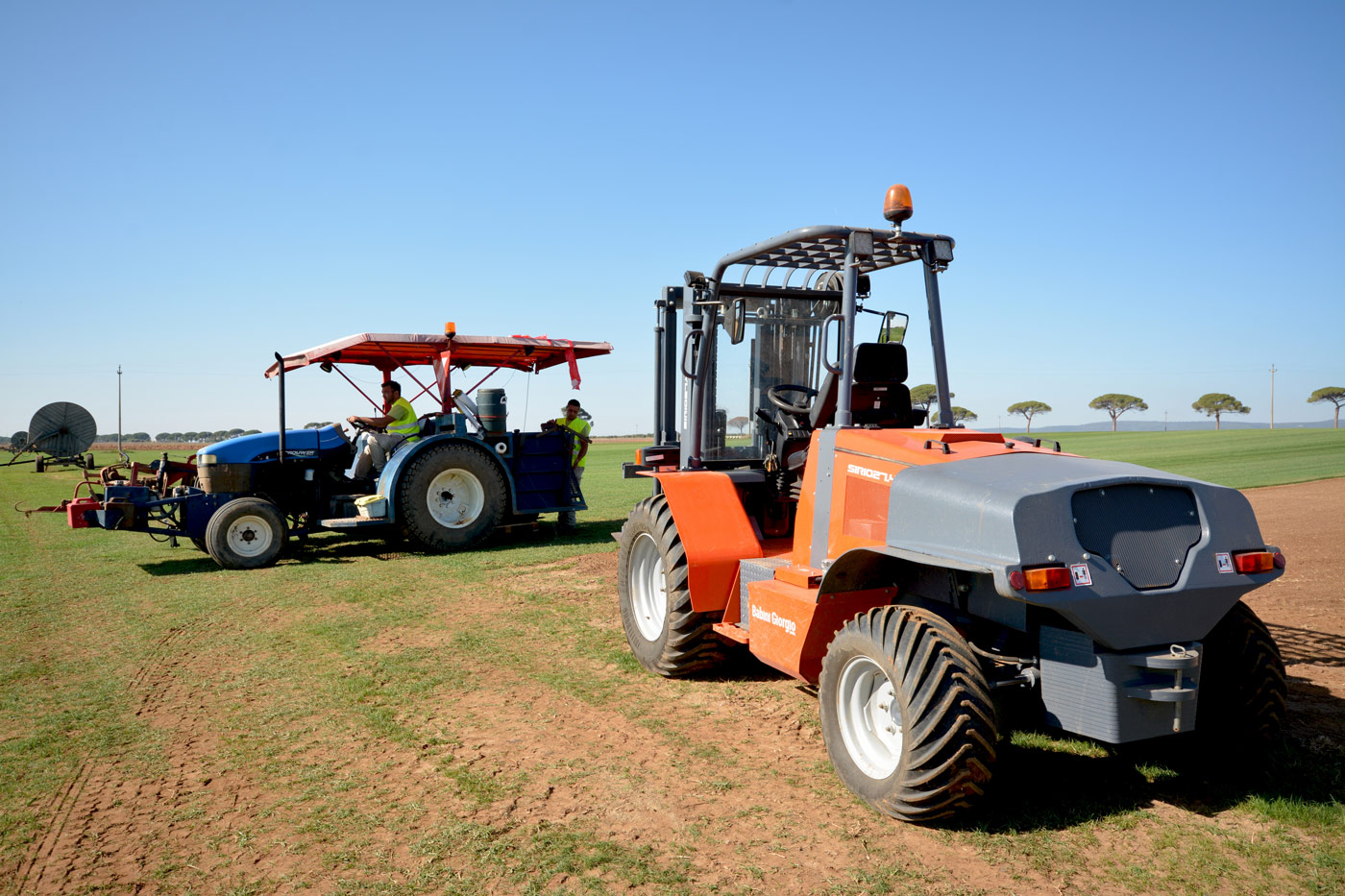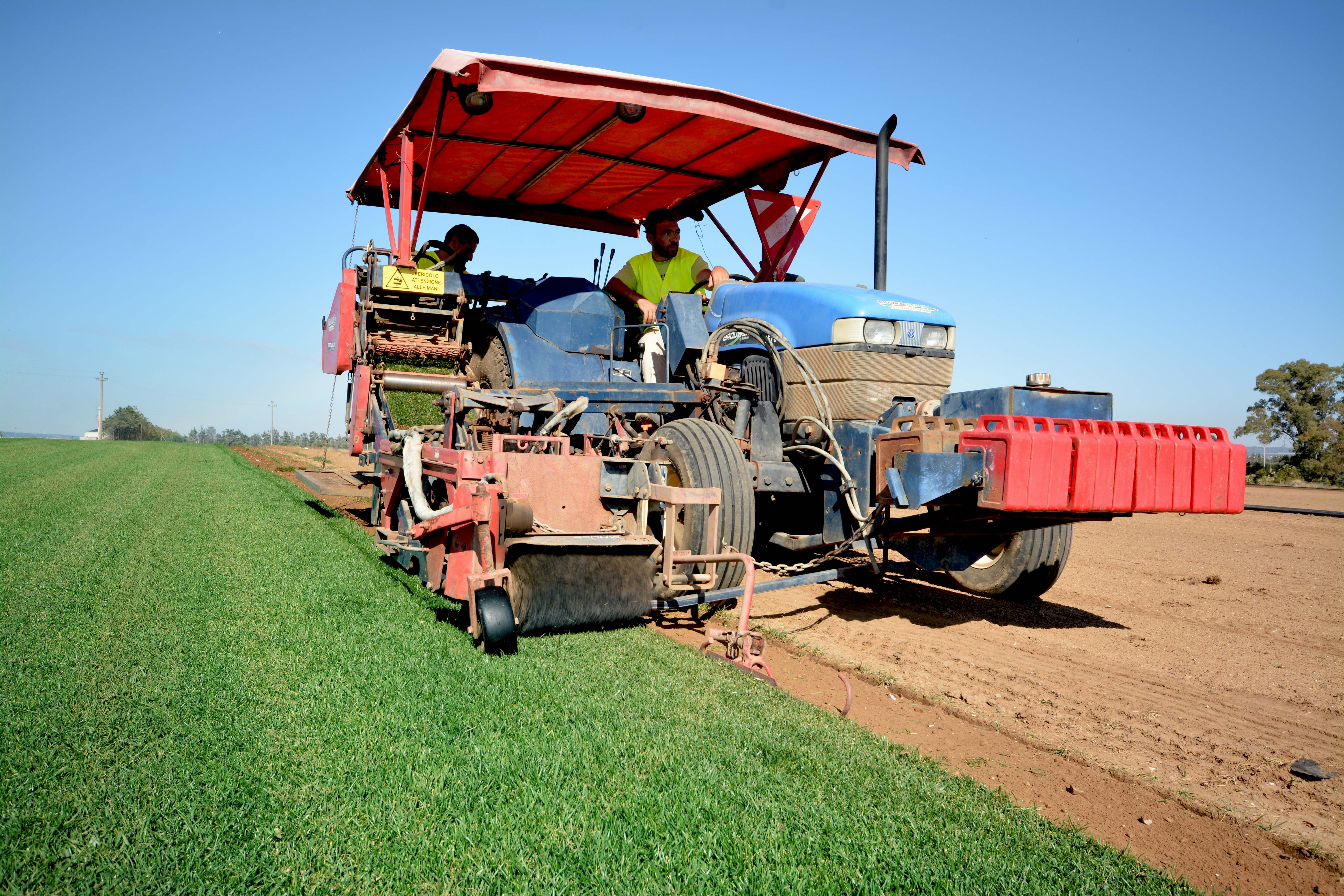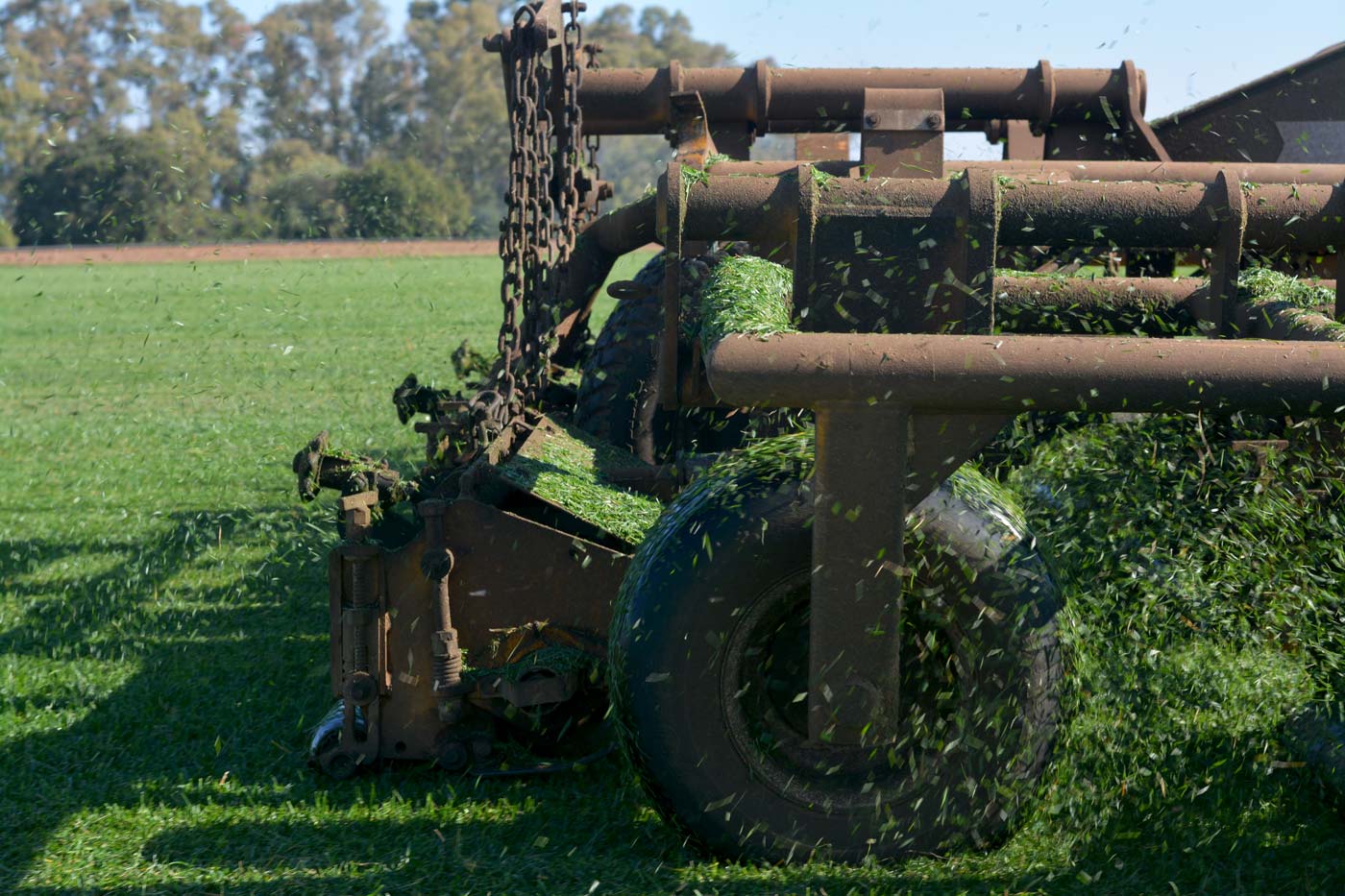Products
TECHNICAL INFO
Turf measures
A) 100 in. x 16 in. = 1 sq. mt.
B) 50 in. x 16 in. = 0,5 sq. mt.
C) 24 in. x 16 in. =0,25 sq. mt.
Average turf thickness
From 0,6 in. to 0,8 in.
Pallet weight
From 2.200 to 3.300 lb.
Turf is placed on pallets. Each pallet can contain a maximum of 60 sq. mt. Turf grass must be put in place no longer than 24 hours after delivery, after having been stored in a cool and ventilated space. We offer the possibility of having the turf grass delivered directly to the site of implantation by hydraulic crane or tail lift trucks.
ASSISTANCE
We consult and provide assistance in situ prior, during and after supply as to ensure the best result from installation. We can also plant runners and rhizomes of the macro-thermal species (i.e. species suited to high temperatures) in order to foster rapid and efficient turf grass coverage over vast surfaces of land (e.g. parks, sports fields, environmental restoration projects, etc.).
TALL FESCUE

Features
Micro-thermal species with erect growth habit. It is characterized by the lowest water demand and the best hot-weather resistance relative to other micro-thermal grass species. It is suitable for temperate climates, especially for the Centre/South of Italy. Festuca Arundinacea (i.e. tall fescue) turf grass has a good aesthetic aspect, and does not undergo dormancy. This species is fairly resistant to treading and requires medium-to-low levels of care and has a root apparatus, which is resiliant to stress caused by summer temperatures typical of the mediterranean climate. It prefers well drained soils, although it adapts to any condition. It tolerates partial shade settings.
Usage
Turf grass for both residential and sporting use; good decorative effect and resistant to treading.
Care
This species needs medium levels of irrigation, fertilizing and mowing. Fertilizing is required 3 to 4 times a year, depending on the type of fertilizer used. It has to be mown every 5-7 days in spring and autumn, while the interval is definitely longer during both winter and summer months. It is advised to mow it at 0.8-1.2 inches height, with a spiral- or revolving-blade mower. It is important to appropriately set both the periods and the intensity of irrigation during hot months, when the species could suffer from aridity. However, you should avoid excessive watering which could cause stagnation. It is advisable to suspend irrigation during rainy months. This turf grass species only occasionally requires removal of moss and/or dead leaves.
Paspalum Vaginatum

Features
Perennial macro-thermal species typical of hot and humid regions, that grows on saline soils, especially in coastal areas. Paspalum Vaginatum forms a dense, uniform and high-quality turf grass. It presents a medium to fine texture. It is characterized by leaning growth habit, with runners and rhizomes. Since it grows horizontally, it has higher resilience to weeds and requires less mowing. The interaction amongst runners and rhizomes produces resistant turf. It also has a quick rate of establishment. In low-intensity cultivation settings, it is the best-performing micro-thermal species. It responds well to irrigation, but its main trait is its excellent endurance to high levels of salinity of soil and of water. Winter dormancy (at our latitude, from November to March) causes color fading.
Usage
Turf grass for sports use; golf use: tees, fairways, rough and even green, tolerating very low mowing heights; decorative gardens, strands and beaches; ideal for conditions of intense treading and low level of maintenance.
Care
This species requires medium to low levels of care. It needs little irrigation, fertilizing and mowing. It can be mown at 0.8-1.2 inches, although it is also fit for cuts from 0.6 to 0.8 inches. Depending on the desired aesthetic effect, it may require mowing (with either spiral- or revolving-blade mower) every 5-10 days during hot months; such frequency drastically decreases over autumn, until winter dormancy. Fertilizing operations have to take into account the need for Nitrogen (N), equal to 0.7-1 lb per 100 sq. mt. for each growing month. It requires a maximum of three such interventions a year. Moss removal should be done only if necessary. In order to counter color fading over the winter season, it is possible to apply inter-sowing with perennial Lolium in autumn, or turf grass coloring with specific paints.
Zoisia
Japonica

Features
Perennial macro-thermal species fit for hot and humid regions, as well as for temperate climate. Zoysia Japonica forms a dense, uniform and good-quality turf grass. It has leaning growth habit, growing horizontally on the land surface through runners and rhizomes. For this reason, it is highly resistant to weeds and requires less mowing. The turf is very robust and strong. This species does not tollerate water stagnation. It has great resistance to temperatures. In fact, it keeps growing up to 40°C. It has excellent resistance to drought and to treading. It also presents good recovery potential: thanks to its runners, it easily re-establishes thinned out areas. It tolerates partial shade rather well, as well as soil and water salinity. Winter dormancy (at our latitude, from November to March) causes color fading.
Usage
Greens, tees and fairways; sports fields; decorative gardens in temperate climates; ideal for conditions of intense treading and low level of maintenance.
Care
This species requires low levels of care, given its need for little irrigation, fertilization and, above all, mowing requirements. It may be mown about every 10 days over the warmest time of the year (an average of 20 times per year from April to October). Mowing height can vary between 0.8 and 1.4 inches (except for greens, where a lower height is necessary) and can be done with an helical blade mower; mowing frequency drastically decreases over autumn, until winter dormancy. Fertilizing operations have to take into account the need for Nitrogen (N), equal to 0.4 - 1 lb per 100 sq. mt. for each growing month. It requires a maximum of three such interventions a year, although they can be even less at low levels of maintenance. In order to counter color fading over the winter season, it is possible to apply inter-sowing with perennial Lolium in autumn (dosing 0.09-0.11 lb. per sq. mt.), or turf grass coloring with specific paints. Moss removal should be done only if necessary.
